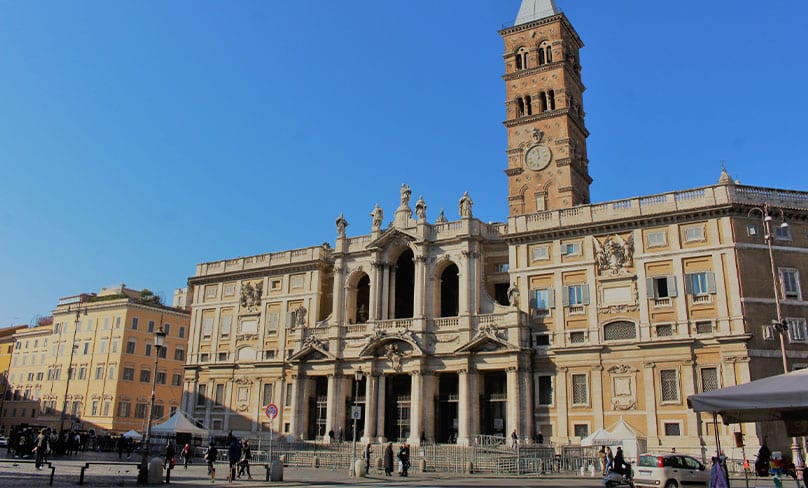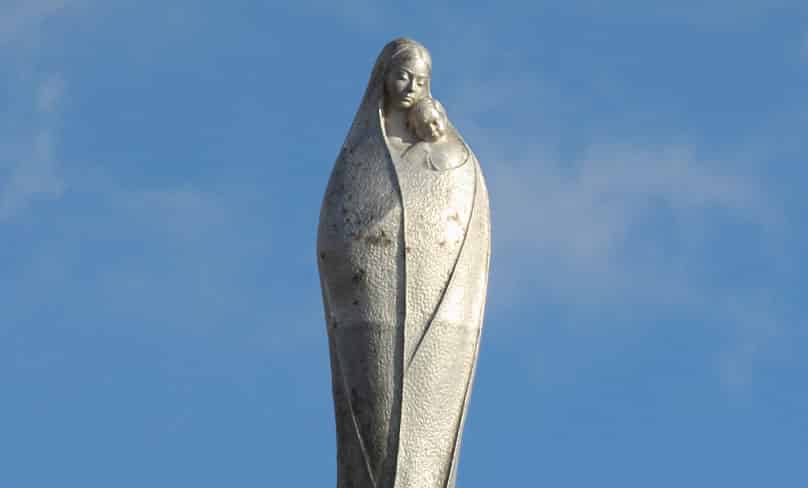
I attended Mass in my parish on August 5 and the priest said something about this feast having been called Our Lady of the Snows. Can you tell me the background to this title?
The feast celebrated as an optional memorial on August 5 is more properly called the anniversary of the Dedication of the Basilica of St Mary Major.
The basilica is one of the four major basilicas in Rome, along with St Peter’s, St Paul Outside the Walls, and St John the Lateran. The basilica has an interesting history, in two stages.
In the fourth century, according to an ancient tradition, a Roman patrician named John and his wife, who were without children, decided to leave their estate to Our Lady. They prayed assiduously, asking Mary to make known to them what work they should undertake in her honour.
One night on August 4 during the pontificate of Pope Liberius (352-366), Our Lady appeared to each of them in a dream and asked that a church be built in her honour at a place where snow would fall. It should be remembered that August is an unbearably hot month in Rome so that it never snows then.
The following day, August 5, snow appeared on the Esquiline hill, one of the seven hills of Rome. The couple reported their dream to Pope Liberius who, it turns out, had had a similar dream.
According to the story, the Pope then went to the site and traced the outlines of the church, which was later built there. It was the first church in Rome dedicated to Our Lady. According to some accounts, the site was that of the large palace where John lived with his wife, and the new church was added on to the palace.
In view of this, it is understandable that the feast was for a time called Our Lady of the Snows. It was originally called Dedicatio Sanctae Mariae, Dedication of Saint Mary’s, and was celebrated only in Rome until it was inserted for the first time in the General Roman Calendar in 1568. From then on, until 1969, its official name was Dedicatio Sanctae Mariae ad Nives, Dedication of Saint Mary of the Snows. To commemorate the tradition of the snow, every year on August 5 a cascade of white rose petals is dropped from the dome during Mass.

In the fifth century, after the Council of Ephesus in 431 declared Our Lady the Mother of God, Pope Sixtus III (432-440) rebuilt the church and dedicated it to Our Lady on 5 August 434. He decorated the apse and walls with mosaics of Our Lord and Our Lady. The mosaics, which adorn the present basilica, completed centuries later, are some of the oldest in existence.
As early as the end of the fourth century a replica of the nativity grotto in Bethlehem was placed in the church, and for this reason the church has also been called St Mary of the Crib. Other names for the basilica are the Basilica of Liberius, St Mary Major, because it is the largest church in Rome dedicated to Our Lady, and Our Lady of the Snows.
It was in this Basilica that St Ignatius of Loyola celebrated his first Mass and that Pope St Pius V said the rosary, praying for success of the Christian fleet over the Turkish navy, in what was to be the Battle of Lepanto in 1570. St Pius is buried in the basilica.
Another important feature in St Mary Major is the ancient image of Our Lady entitled Salus Populi Romani, meaning literally “health”, “salvation” or “protectress” of the Roman people.
The actual origin of the image is uncertain although, according to some, it was painted by St Luke himself. One tradition has it that the image was taken to Rome by St Helena, mother of the emperor Constantine, in the fourth century.
It is said that it was Pope Liberius who hung the image in the newly completed church of Our Lady. According to a pious tradition, the icon was instrumental in saving Rome from the ravages of a devastating plague during the pontificate of Pope St Gregory the Great (590-604).
Pope Francis used this image in the prayer vigil at St Peter’s on 27 March 2020 for an end to the coronavirus pandemic. Before his trips overseas, Pope Francis visits St Mary Major and entrusts the fruits of the trip to Our Lady. Upon returning he again goes to the basilica to thank Our Lady for the fruits.
Related
